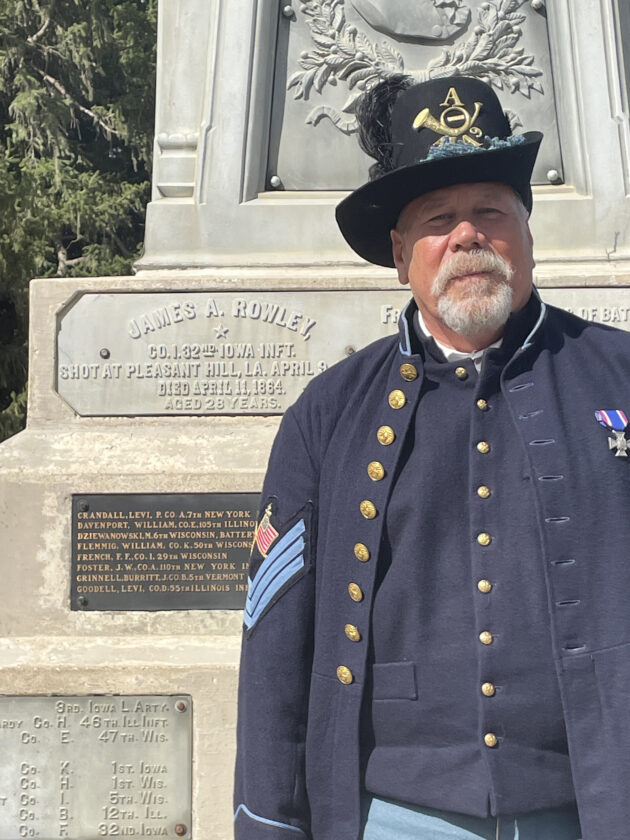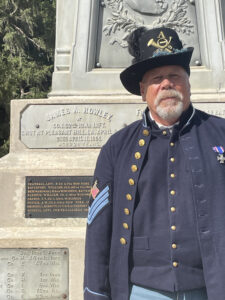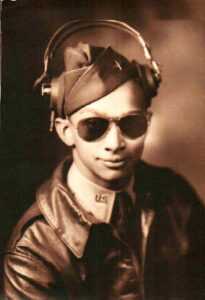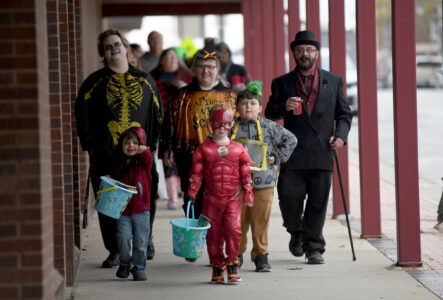Not Forgotten
A life sacrificed so that freedom shall not perish
-
-Submitted photo
Mike Rowley, as a member of the Sons of Union Veterans of the Civil War, in proper attire pays tribute at a monument honoring the missing and fallen, one of his ancestors, James Albert Rowley, at Union Cemetery in Humboldt.

-Submitted photo
Mike Rowley, as a member of the Sons of Union Veterans of the Civil War, in proper attire pays tribute at a monument honoring the missing and fallen, one of his ancestors, James Albert Rowley, at Union Cemetery in Humboldt.
HUMBOLDT — He never came home. He was 26 years old with a wife and young daughter who would never see him again, never know fully what became of him, never know where his body would rest.
James Albert Rowley was born in New York and had come west to Iowa, settling in Dakota City. He would enlist in the Union Army in 1862, joining the fight to save the country from splintering apart.
Rowley served in Company I of the 32nd Iowa Infantry. Organized in Dubuque, the company moved out from Davenport and would see battle throughout many regions of the South. It was during the Red River Campaign that Rowley, who had suffered through illness as was so common among soldiers from both sides, would make the ultimate sacrifice for his nation.
The battle of Gettysburg had turned the tide of the war in July 1863, but there were battles still ahead as the Union ventured into the Deep South. In April 1864, the Battle of Pleasant Hill was fought in Louisiana. It was here that Rowley was wounded on April 9, 1864. He was taken prisoner by Confederate soldiers and died while in captivity. A cenotaph in Humboldt County records his death as two days later, on April 11, 1864.
It’s been 160 years since the end of the Civil War — but Rowley is not forgotten.
“He was my great-great-grandfather’s brother,” said Mike Rowley. “He was wounded during the battle and died in a prisoner of war camp.”
Rowley was on hand earlier this fall when a small group gathered at Humboldt’s Union Cemetery to lay a wreath and pay tribute to Rowley, and so many others who remain a POW/MIA from battles long gone by.
“To put things in perspective, it’s so little effort on our part to honor them,” Rowley said. “I can’t imagine a close family member being missing and never returned.”
Rowley pointed to the estimated 1,700 still missing or unaccounted for from Vietnam.
In the Civil War, the numbers were far more staggering.
A monument at Union Cemetery prominently honors the sacrifice of James Albert Rowley. But it is a cenotaph, not a grave marker. His remains were never returned and their whereabouts are lost to history.
“History is not always simple,” Rowley said. “I think his body might be in a mass grave somewhere in the South.”
More than half of the nation’s national cemeteries — such as Arlington in Virginia or Keokuk National Cemetery in Iowa — were established as a result of the Civil War. Both Arlington and Keokuk were among the first 13 national cemeteries. Keokuk is the final resting place of some 48 unknown soldiers.
The famous Tomb of the Unknown Soldier at Arlington National Cemetery is home to one soldier each from World War I, World War II, and the Korean War. (The Vietnam War unknown was later identified and returned, at the request of his family, to his home state.) But there is also a much larger, lesser known, Tomb of the Unknown at Arlington. At this monument for Civil War veterans, there are more than 2,000 unknowns buried together, with the largest share from the Battle of Bull Run.
Thousands more unknowns are buried at the four national cemeteries in Louisiana, where James Albert Rowley was wounded and died. Union POWs were primarily buried at the state’s Port Hudson and Chalmette national cemeteries. There are many more Union and Confederate cemeteries dotted across the South.
In the years after the Civil War, Union veterans banded together and formed the Grand Army of the Republic. It was the nation’s first veterans’ organization, and the inspiration for other groups that would follow, such as the Veterans of Foreign Wars, formed in 1899 after the Spanish-American War, and the American Legion, founded in 1919 after World War I.
The GAR was one of the most powerful political organizations of its day, boasting at least four future presidents among its members. The GAR rallied to provide assistance to veterans, widows and orphans. It also sought to expand benefits to veterans whose injuries were not the direct result of battle, but could be linked to the after-effects long after the end of the war. In the late 1800s, that was an idea ahead of its time. Indeed, the nation has learned that even those veterans who make it home pay a price that often lasts the rest of their lives.
The GAR Post in Humboldt was dedicated in the name of the late James Albert Rowley. While the post is no longer active, the monument at Union Cemetery provides a reminder of the sacrifice made to save the Union.
Rowley remains active in a number of organizations promoting the needs of veterans and drawing attention to service rendered. These include such groups as the Sons of Union Veterans of the Civil War and the Iowa Society of the Sons of the American Revolution.
“I’m trying to keep several old organizations alive,” he said. “Sometimes, if you do even little things, it inspires people to keep things going … I think history is important because it has the opportunity to teach us all something — and maybe inspire us and make us the best we can be.”




